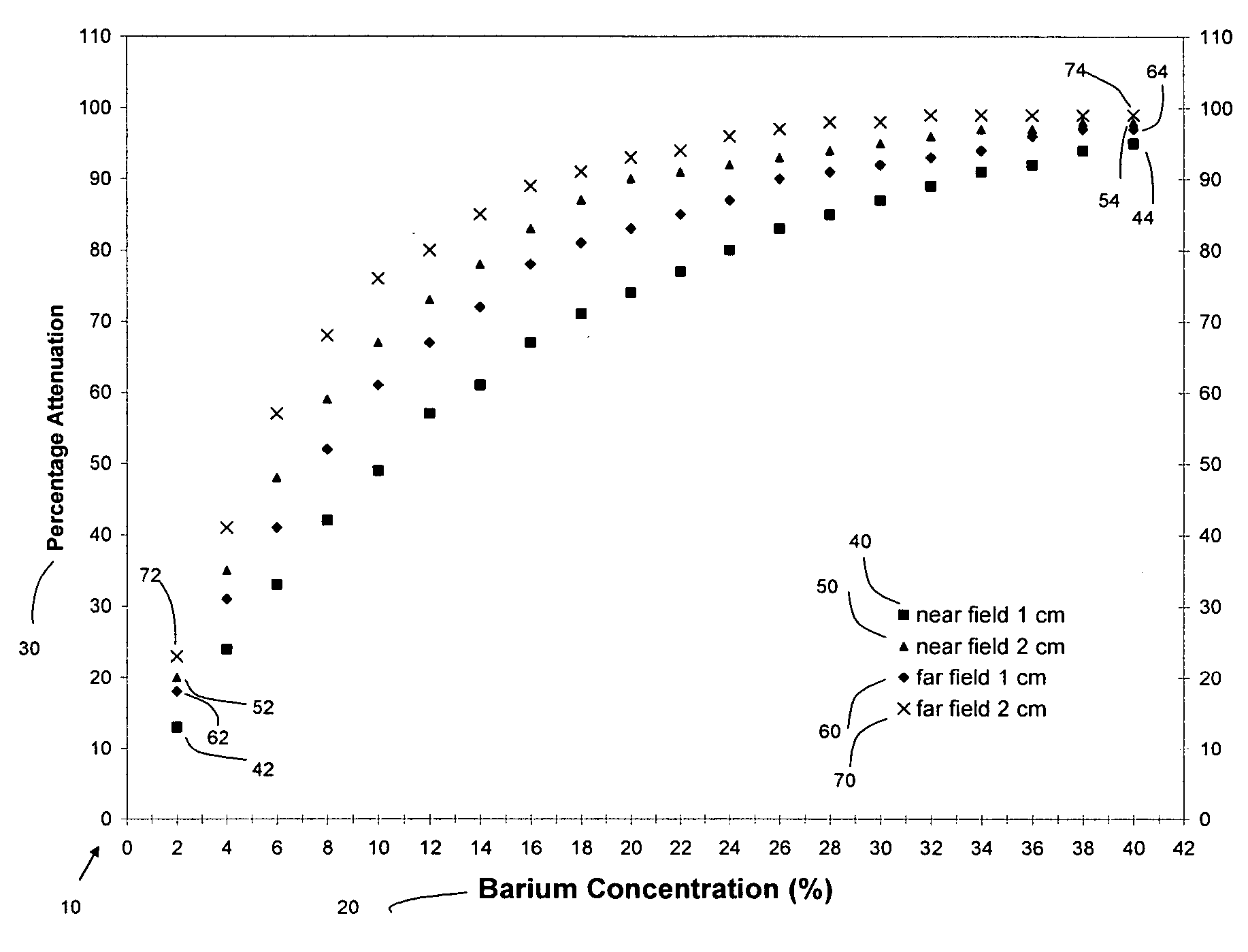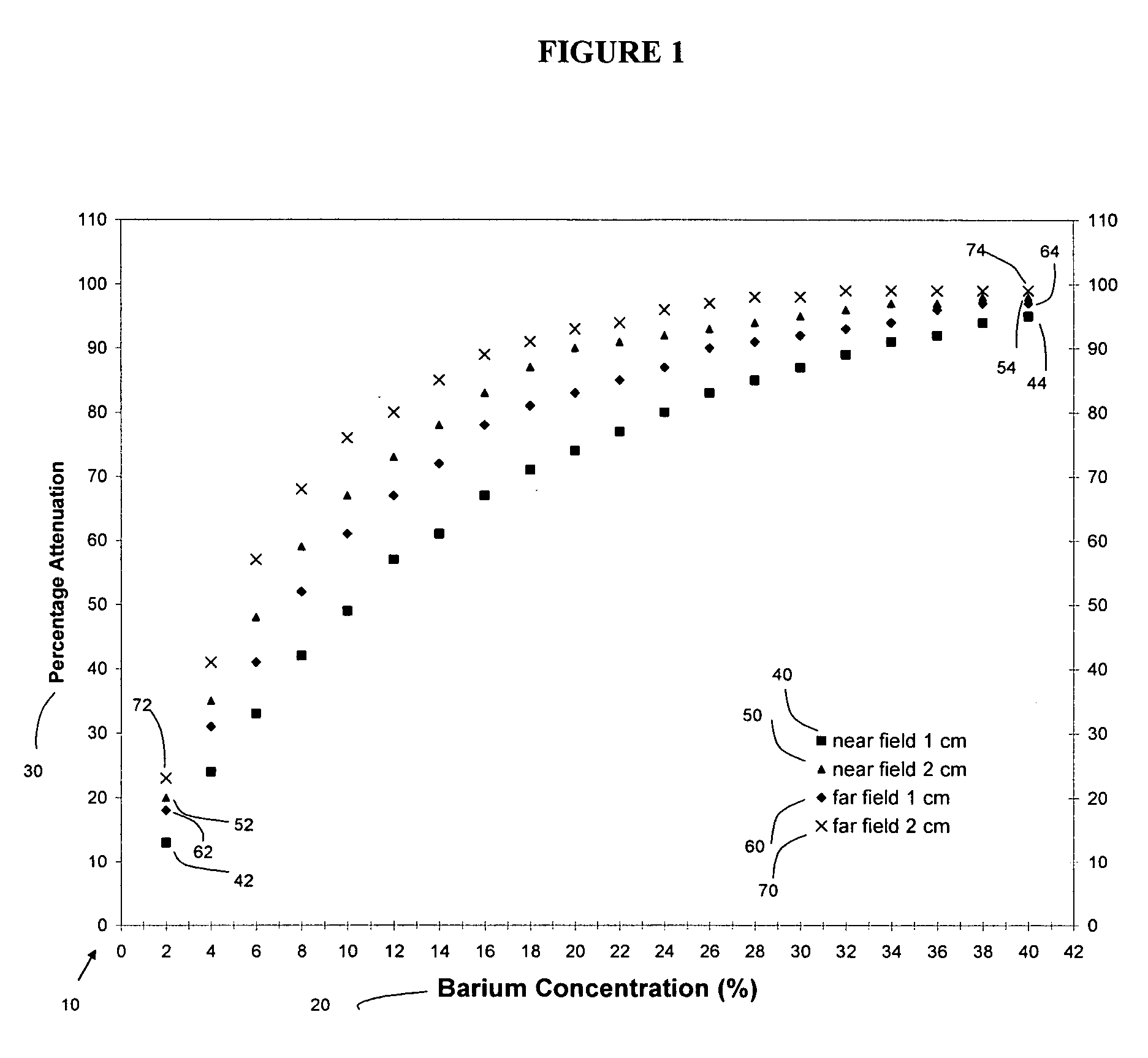Methods of attenuating internal radiation exposure
- Summary
- Abstract
- Description
- Claims
- Application Information
AI Technical Summary
Benefits of technology
Problems solved by technology
Method used
Image
Examples
example 1
The Attenuating Effect of Barium Sulfate as an Internal Shield to Protect the Fetus was Tested in a Phantom Simulation Experiment Involving Fetal Irradiation in Spiral Chest CT
[0050] An anthropomorphic Rando phantom with 2.5 cm thick tissue-equivalent contoured slabs was chosen as an in vitro model. The phantom had antero-posterior and side-to-side dimensions and a circumference of 27.5, 20.5, and 81 cm, respectively.
[0051] Two different LiF thermoluminescent detectors (TLDs), Harshaw and Landauer, 0.04 and 0.23 g / cm2 in weight, were chosen because (a) they can easily be positioned at various locations within the phantom; (b) a minimum dose of 0.10 mGy can be measured based on the variability of the signal from non-irradiated detectors despite background noise; (c) the measurement precision was better than 1.5% throughout the study; and (d) the energy response of the TLDs is known, having been investigated before at various beam qualities. The last characteristic was particularly ...
PUM
 Login to View More
Login to View More Abstract
Description
Claims
Application Information
 Login to View More
Login to View More - R&D
- Intellectual Property
- Life Sciences
- Materials
- Tech Scout
- Unparalleled Data Quality
- Higher Quality Content
- 60% Fewer Hallucinations
Browse by: Latest US Patents, China's latest patents, Technical Efficacy Thesaurus, Application Domain, Technology Topic, Popular Technical Reports.
© 2025 PatSnap. All rights reserved.Legal|Privacy policy|Modern Slavery Act Transparency Statement|Sitemap|About US| Contact US: help@patsnap.com



